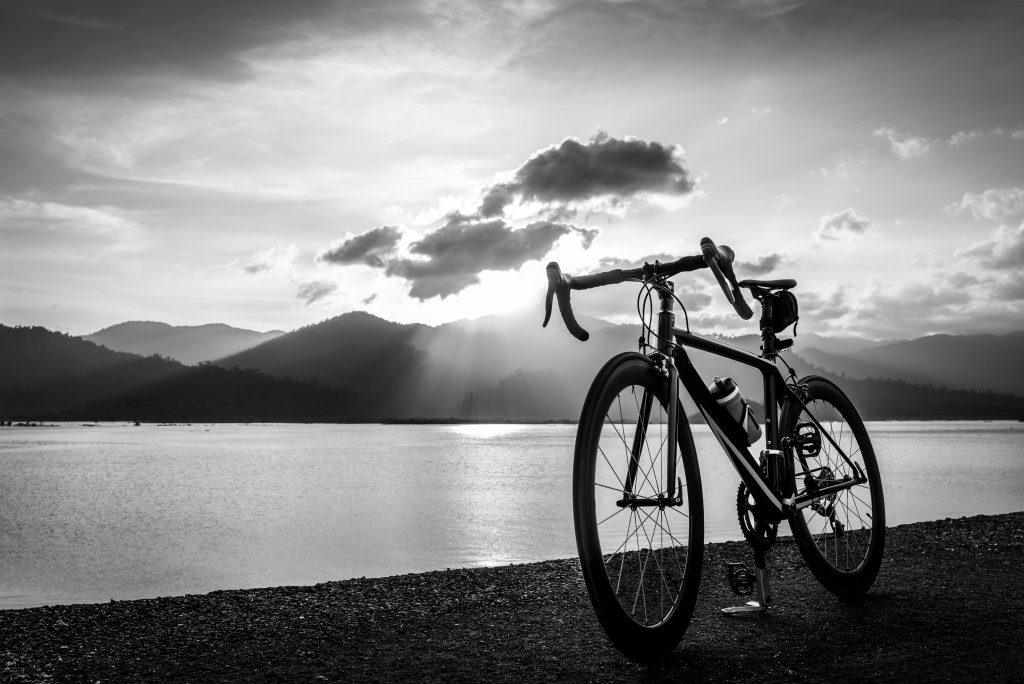Guest Author: Megan Moseley, founder of Bodywise Physical Therapy
As we move toward winter, I wanted to share some tips on staying fit, healthy, and happy through the season. Personally, I am a fair weather bike rider; I don’t mind a cold, sunny day, but I’m not excited about training in heavy rain. To further complicate matters this year, COVID is keeping us away from the gym. And while some use virtual riding applications to simulate road riding and socializing in the saddle, it’s not a platform that everyone has or may even like to use.

So, are there off-the-bike options to continue to optimize health during this extra-challenging winter of 2020? Yes. I’m a big believer in balance- Balance in our bodies and balance in our lives. Too often we can get wrapped up in the “doing” of our lives, and our sport. As much as I LOVE cycling for the fitness, beauty, connection with the outdoors, and friends, this season can offer us opportunities to become more balanced beings.
For me, part of moving into winter is embracing the season of coming inside, settling, being more quiet and generous with myself. By this I mean a greater focus on flexibility to counter the forward position and repetitive motion of cycling; cross-training focused on back body strength, getting extra rest, and practicing resiliency.
So what does resiliency look like?
If you’ve watched any of my Get On Your Game videos for Cycle Oregon these exercises will be familiar, as they offer so much benefit with just a few simple moves. They are: Hamstring Stretch, Snow Angel, Quad Stretch, Squat, and my all-time favorite, Superman.
Next, let’s take a moment to dive into what it means to develop a resiliency practice. First, what does resiliency mean?
Common definitions include:
- The capacity to recover quickly from difficulties
- The ability to spring back into shape; elasticity
I think it’s more than either or even both combined. To me, building resiliency means we not only recover when faced with an injury or challenge, but we learn and grow, becoming even better, stronger, more capable, building a foundation from which to spring further forward.
I’ve been practicing Physical Therapy for over 30 years. While I’ve always focused on the body as a system, integrating everything from the bottom of the foot to the top of the head, my practice has evolved in the past 12 years to be much more holistic by integrating education and treatment of the nervous system. I believe this internal focus is foundational to our health and well being, as healing starts from the inside out.
Resiliency practices are simple physical activities, using the body to influence/down-shift the baseline “tone” of our nervous system from a sympathetic, “fight-or-flight” state of being to a parasympathetic “rest, digest, tend, befriend” state of being. Essentially, the state of our nervous system is the filter of our perception and it influences our experience in every moment. By shifting to a more calm, settled nervous system, we lower our inflammatory response, boost the immune system, improve cellular health, sleep more deeply, are able to respond mindfully vs react instinctively, thereby improving our relationship with ourselves, and those in our lives. In a nut shell, resiliency practices can help us fully, presently, live our lives versus just survive.
“So, how do I get some of this resiliency stuff?”, you may be asking…
Here is an introduction to a few of my favorite resiliency skills.
SETTLING BREATH
Type: Movement
When to use: Anytime. Medium fight-flight feelings
How: practice sitting or standing. place one hand on chest on and one on your abdomen. Invite breath into lower hand expanding and relaxing your abdomen. Breathe in through your nose, and out through your mouth. Intentionally extend your exhale longer than your inhale. For example, inhale 4 seconds, exhale 6 seconds.
BUTTERFLY HUG
Type: Movement / Crossing the Mid-line
When to use: Anytime. Especially high fight-flight feelings
How: Bring both hands to opposite sides of your chest, palms facing you and thumbs crossed, and fingertips just below your collarbone. Gently, alternately tap your hands on your chest.
ARM SWEEP
Type: Movement / Crossing the Mid-line
When to use: Anytime. Especially high fight-flight feelings
How: Bring one arm across your body to the opposite shoulder, sweep/massage all the way down to your hand. You can time this with your breath ie exhale with the sweep, inhale to switch sides.
ORIENTING
Type: Mindfulness
When to use: High fight-flight feelings
How: Engage in the outer world. Be sure to slowly turn your head back and forth. Take in the sights, smells, sensations. Pause on anything that draws your curiosity. Spend a few moments noticing “how you know” you like it. For example, what do you feel in your body when you see the fall color leaves being carried by the wind? Soak up what feels positive and safe about the experience, again checking in with your body-experience.
Embrace the world.
We’d like to thank Megan and the Bodywise team for their years of support and enthusiasm at Cycle Oregon events. Here’s to many more!